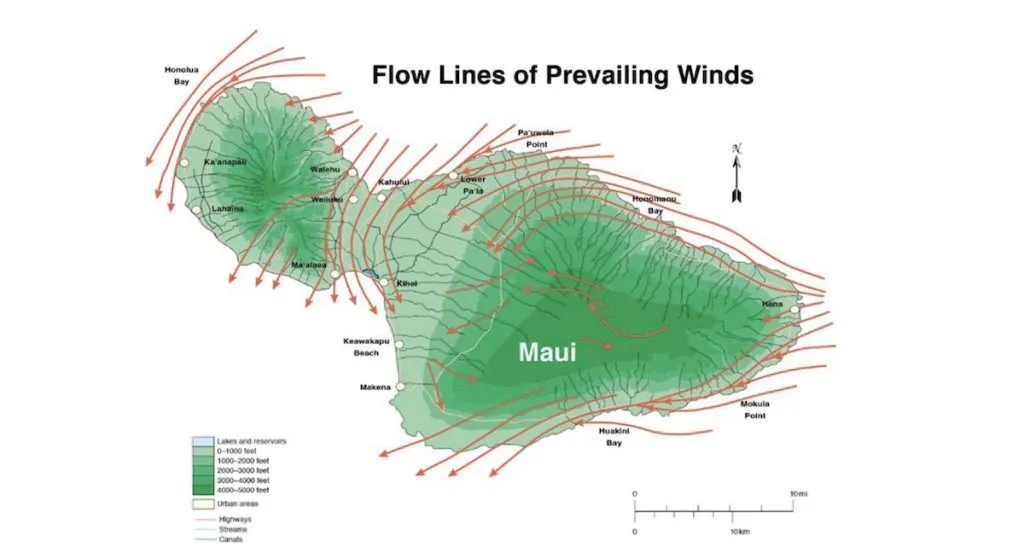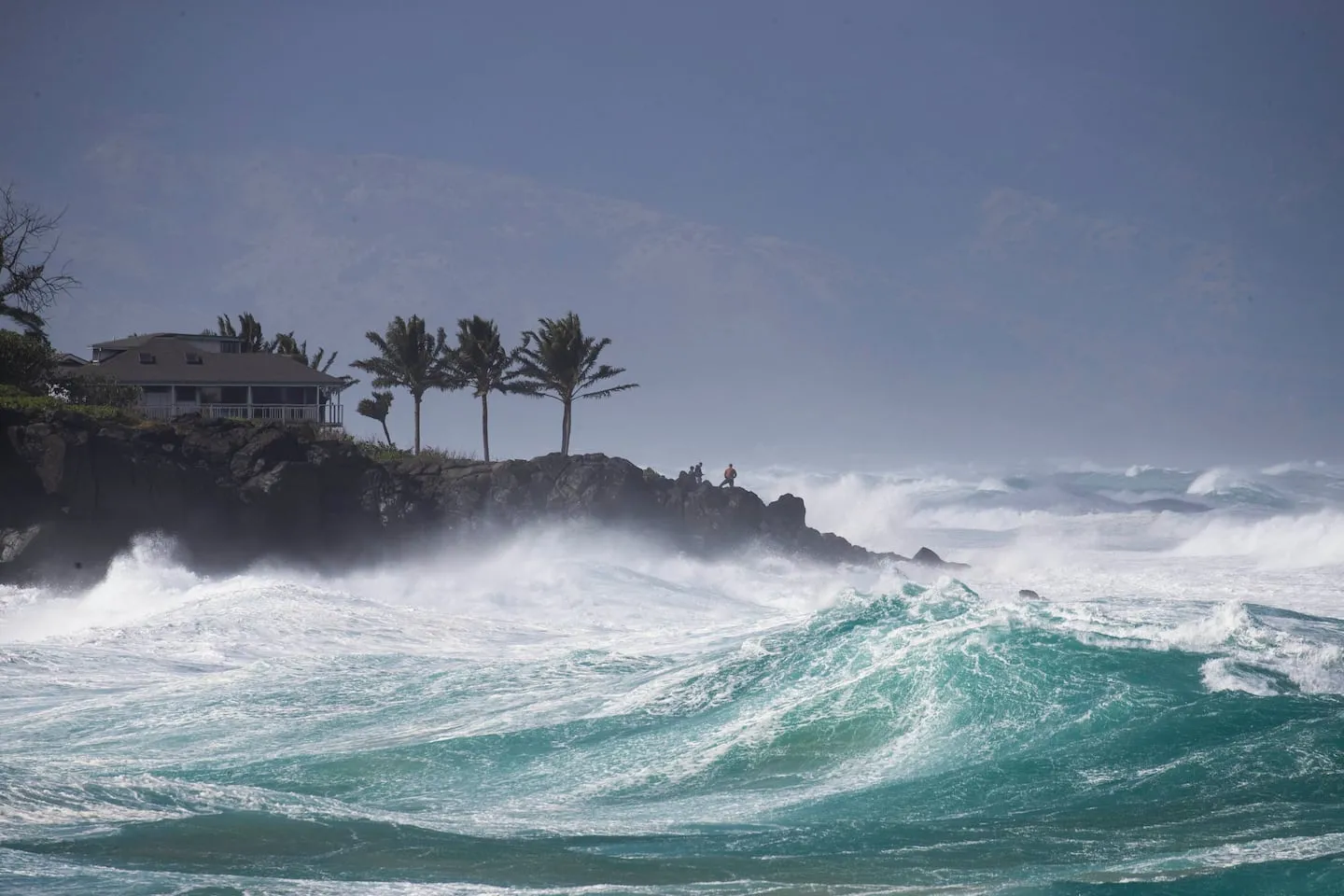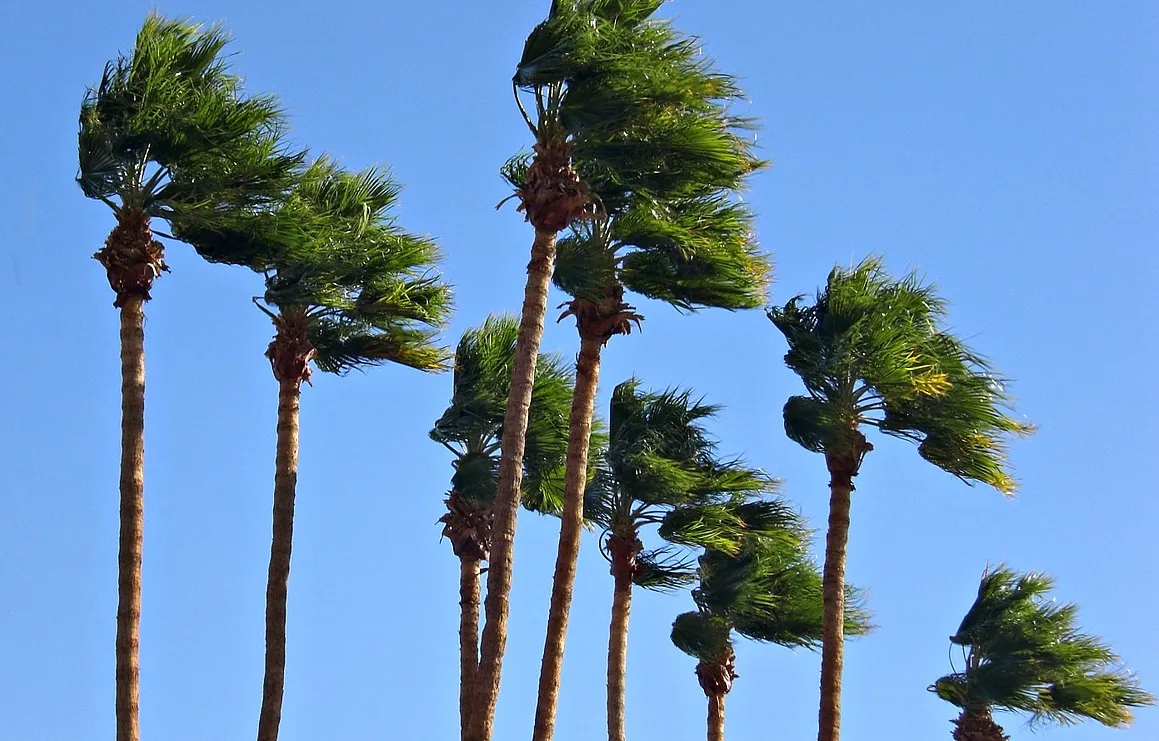Table of Contents
When most people picture Maui, they imagine warm trade winds, bright blue skies, and palm trees swaying gently in the breeze. While that’s true for much of the year, winter brings its own unique personality—especially when it comes to weather. The winds in winter on Maui can shape your vacation experience in surprising ways, from creating ideal conditions for surfers to influencing which beaches are best for families during the cooler months.
If you’re planning a winter getaway to Maui, understanding the seasonal wind patterns can help you choose where to stay, what activities to enjoy, and how to make the most of this dynamic, beautiful season.
What Causes Maui’s Winds in Winter?
Hawaii’s climate is shaped primarily by the Northeast Trade Winds, a steady flow of air that crosses the Pacific year-round. While the trades dominate the summer months, winter on Maui brings the possibility of Kona winds, cold fronts, and increased storm activity in the North Pacific.
Here’s what typically influences the winds in winter:
1. Kona Winds
Kona winds blow from the opposite direction of the normal trade winds—coming from the south or southwest instead of the northeast. These winds:
- Are more common between November and March
- Bring warmer, more humid air
- Can lead to cloudier weather and occasional showers
- Often make south-facing beaches choppier than usual
While not constant, Kona wind periods can last from a day to several days.
2. Winter Storm Systems
The northern Pacific becomes more active during winter, sending large swells and pressure systems toward Hawaii. These systems can temporarily interrupt the trades and create gustier conditions—especially in exposed areas like:
- The Pāʻia and Haʻikū region
- The North Shore coastline
- The West Maui mountains
If you’re staying or driving near these regions, expect occasional windy afternoons.
3. Shifts in Trade Wind Strength
Trade winds don’t disappear in winter—they simply become less predictable. Some weeks are perfectly calm, while others bring stronger-than-usual gusts. On average, winds in winter tend to be:
- Slightly stronger than summer
- More variable in direction
- Influenced more by passing cold fronts

Where on Maui Feels the Strongest Winter Winds?
Because Maui’s landscape is shaped by tall mountain ranges and deep valleys, wind behaves differently across the island.
North Shore (Pāʻia, Ho‘okipa, Haʻikū)
This region feels the brunt of winter’s power. Strong northerly swells, active weather systems, and open exposure to the Pacific make the North Shore a magnet for big-wave surfers—and a windy winter hotspot.
If you enjoy watching elite surfers, winter here is unmatched. If you’re seeking calm, swimmable beaches, head south or west.
West Maui (Kāʻanapali, Lahaina Area)
Despite front-facing the winter swells, West Maui often benefits from natural mountain shielding. Mornings are typically calm with winds increasing in the afternoon.
South Maui (Kihei, Wailea, Makena)
South Maui is usually the best escape for visitors wanting lighter winds. Even when the North Shore is gusty, Kihei often remains sunny and manageable—with only occasional breezy afternoons.
How Winds in Winter Affect Your Maui Vacation
1. Surfing and Watersports
Winter means massive surf on the North Shore—world-class waves at spots like Ho‘okipa and Peʻahi (Jaws). Winds influence:
- Surf quality
- Safety conditions
- Beach access
Beginners should stick to South Maui’s gentler breaks. Winds in winter can make paddling and balance more challenging.
2. Snorkeling and Beach Days
Because of winter swells and wind patterns, the best snorkeling is typically found on:
- South Maui (Kihei, Wailea, Makena)
- West Maui on calmer days
Windy afternoons can create choppy ocean conditions, so morning is the ideal time for snorkel tours and beach lounging.
3. Driving and Travel Plans
Winter winds can affect:
- The Hana Highway (blown debris, rain)
- Upcountry and Haleakalā (cool temps + strong gusts)
- North Shore coastal drives
Checking daily weather updates is smart, especially if you’re planning to explore remote or exposed areas.
4. Outdoor Dining and Activities
If you’re booking dinner reservations, luau tickets, or sunset cruises, consider the wind factor. South and West Maui tend to have better sheltered dining environments during gusty evenings.
Tips for Visiting Maui During Winter Winds
- Plan beach days for mornings when winds are lighter.
- Choose South Maui for the calmest winter conditions.
- Check surf and wind reports daily (especially on the North Shore).
- Book wind-sensitive activities—like snorkeling, sailing, or ziplining—on flexible days.
- Bring layers for Haleakalā; winds can drop temps into the 40s or lower.
- Don’t worry about rain—winter showers are usually brief and localized.

Winter on Maui is still warm, beautiful, and full of sunshine. The island is simply more energetic during this season—and understanding the winds in winter helps you enjoy it like a local.
The winds in winter on Maui are part of what makes the island dynamic, alive, and ever-changing. Whether you're chasing big surf, seeking calm beach days, or exploring every corner of the island, knowing how wind patterns shift during the season can elevate your trip. With the right planning and expectations, winter remains one of the most rewarding—and breathtaking—times to visit Maui.
Helpful Links
- Maui Weather Forecast: https://www.weather.gov/hfo/
- Surf Reports & Live Cams: https://www.surfline.com/
- Snorkel & Activity Conditions: https://hawaiibeachsafety.com/
- Haleakalā National Park: https://www.nps.gov/hale/index.htm
Below is a matching FAQ section designed to align directly with the blog post’s main topics. Each question is phrased the way a traveler might ask AI, and each answer summarizes the corresponding section in a clear, helpful way.
Frequently Asked Questions
1. What causes the winds in winter on Maui?
The winds in winter on Maui are shaped by several seasonal weather patterns. While the island normally experiences steady Northeast Trade Winds, winter introduces Kona winds from the south, passing cold fronts, shifting pressure systems, and stronger Northern Pacific storm activity. These elements make winter winds more variable in direction and strength compared to summer.
2. Why are Kona winds more common during winter?
Kona winds develop when high- and low-pressure systems shift around the Hawaiian Islands during the colder months. From November through March, weather fronts interrupt the usual trade winds, allowing warm, humid winds from the south or southwest to flow in. These winds often bring cloudier skies, increased humidity, and choppier ocean conditions—especially on south-facing beaches.
3. Where on Maui are the winds the strongest during winter?
The strongest winter winds are typically found along the North Shore—particularly Pāʻia, Ho‘okipa, Haʻikū, and exposed coastal stretches. This area faces north and receives both the seasonal winter swells and the gusty weather systems that pass through the Pacific. In contrast, South Maui (Kihei, Wailea, Makena) is usually the calmest place during winter wind events.
4. How do winter winds affect surfing conditions on Maui?
Winter winds significantly impact surfing because they interact with the large seasonal swells hitting the North Shore. While surfers chase the massive waves at Ho‘okipa and Peʻahi (Jaws), winds can alter wave shape, surface texture, and safety conditions. Beginners should avoid the North Shore in winter and surf the more protected South Maui breaks.
5. What beaches are best for snorkeling during windy winter days?
When the winds in winter pick up, the calmest snorkeling conditions are usually found in South Maui—especially in Kihei, Wailea, and Makena. These areas remain sheltered from the strong North Pacific swells. West Maui can also be good on calmer days, but mornings are always best before trade winds rise in the afternoon.
6. How do winter winds impact driving conditions on Maui?
Strong winds in winter can affect driving along exposed roadways like the Hana Highway, the North Shore coast, and Upcountry routes toward Haleakalā. Gusts may bring fallen branches, swaying trees, mist, and wet road surfaces. Checking daily conditions is recommended for anyone planning a scenic drive or visiting higher elevations.
7. Should I change my outdoor plans because of the winter winds?
You don’t necessarily need to cancel plans, but it’s smart to adjust timing and location. Early mornings are usually less windy for beach outings, snorkeling, or boat tours. Choosing South Maui helps avoid gusty afternoons. Dining outdoors in North Shore and West Maui may be breezier, so sheltered or indoor options are wise during stronger wind days.
8. Is winter still a good time to visit Maui if it’s windy?
Absolutely. Winter is one of the most popular times to visit Maui because temperatures remain warm and the island feels alive with big surf, whales, and vibrant scenery. The winds in winter add a dynamic element to the season, and with proper planning—like choosing calm beaches and morning activities—visitors still enjoy incredible weather.
9. What can I do to prepare for windy winter weather on Maui?
A few simple steps make a big difference:
- Plan ocean activities in the morning
- Check wind and surf reports daily
- Stay in South Maui for the calmest conditions
- Bring layers for Haleakalā’s cold, windy summit
- Choose flexible days for sailing or snorkeling tours
These tips ensure your trip stays fun and comfortable regardless of wind changes.
10. Are winter winds dangerous for tourists?
Generally, no—winter winds are more of a comfort and planning consideration than a safety issue. The main hazards come from rough ocean conditions on the North Shore, not the wind itself. As long as visitors respect beach safety signs, avoid rough surf, and stay aware of weather updates, winter on Maui remains safe and enjoyable.
If you would like to read and learn more about interesting things in Hawaii! Check out our blog page here on our website!
or
